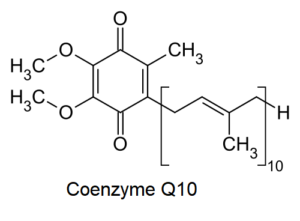Aloe: Potential Uses, Risks and Benefits

Aloe plants are succulents with large fleshy leaves that contain a large percentage of water as a viscous gel. While known most prominently as a treatment for burns, the gel has other potentially helpful properties, including wound healing, antimicrobial and anti-inflammatory effects. The term “aloe” describes a number of different, but related plants, where aloe vera is one of the most commonly utilized aloe species for medicinal purposes.
While most research has focused on aloe as a topical treatment or mouthrinse, it also may be helpful for gastrointestinal and inflammatory conditions like arthritis. However, caution is warranted with some commercial products, as many contain the green skin and latex from the leaf and are likely harmful or toxic with long-term consumption.
Topical Aloe for Skin Conditions
A recent meta-analysis concluded that aloe, used for first and second degree burns, was more effective than standard medical treatments. It shortened recovery to nine days on average and helped prevent irritation and infection (Hekmatpou 2019).
For reference, a first degree burn is the least serious, with just reddening of the skin. A second degree burn includes blistering. Third degree burns are more serious, penetrating the full thickness of the skin, which generally requires more intensive treatment measures beyond just topical aloe gel.
Studies have also shown efficacy with using aloe for surgical incisions. Treating surgical wounds three times daily decreases pain and shortens recovery time (Hekmatpou 2019). Other chronic skin conditions, including psoriasis, genital herpes and chronic anal fissures have also responded to aloe vera topical treatments (Syed 1996, Syed 1996, Choonhakarn 2010, Rahmani 2014, Kanlıöz 2020).
Aloe As a Mouth Rinse
For plaque and gingivitis or inflammation of the gums, aloe vera rinse has been compared to the standard antiseptic, chlorhexidine mouthwash. Overall, the research suggests aloe may be as effective for inflammation, although possibly less so for plaque removal. However, results were somewhat variable and additional research could help to clarify. Of note, aloe vera was much better tolerated as compared to chlorhexidine (Al-Maweri 2020).
Oral mucositis is a condition caused by standard cancer treatments, leading to inflammation, ulceration and pain of the tissues inside the mouth. While the first published study didn’t show benefits (Su 2004), later studies on aloe for preventing and treating oral mucositis have found significant improvements. Aloe was found to help treat and prevent mucositis caused from both radiation and chemotherapy (Ferreira 2022).
Aloe for Irritable Bowel Syndrome
Irritable bowel syndrome is a condition often marked by abdominal pain with constipation or diarrhea. In patients with irritable bowel syndrome, aloe has shown some potential to help reduce symptoms. While one of the most recent studies only found benefits equivalent to placebo, fully one-third of patients still responded to treatment. Subjects that responded to aloe had specific gut flora parameters that were likely key to their improvement (Ahluwalia 2020).
An earlier meta-analysis of aloe vera ingestion for irritable bowel syndrome found the treatment to be effective (Hong 2018). Aloe vera reduced irritable bowel symptoms significantly better than placebo in the three included studies.
Aloe for Arthritis
While the evidence for using aloe for the treatment of arthritis is not nearly as robust as other indications, it is still worth considering. Animal studies have shown anti-inflammatory effects with aloe for rheumatoid arthritis (Kamal 2021, Guha 2014).
Other research suggests benefits for osteoarthritis or “wear-and-tear” of the joints (Cowan 2010). Similar to the studies on rheumatoid arthritis, additional research has also found anti-inflammatory benefits with aloe (Yagi 2003). And along with the anti-inflammatory effects, aloe also appears beneficial in helping to repair damaged joint tissues, promoting connective tissue healing (Chatterhee 2018).
Aloe: Safety Issues

When used properly, aloe appears to be quite safe. However, aloe leaves contain three basic components, the clear inner gel, a latex compound between the gel and skin and the outer green-leaf skin. The clear gel contains the constituents that provide anti-inflammatory and therapeutic properties. Products for oral and topical use should be based on the gel alone. The outer skin and latex of aloe leaves are well known to cause diarrhea and contain constituents that are both carcinogenic and toxic (Guo 2019).
Products that are advertised as whole leaf extracts or that contain the whole leaf will include the toxic constituents and should not be used therapeutically.
Another potential problem with aloe products are some of the added ingredients. Most aloe gel products for oral use contain a thickener. In some cases, this thickener is carrageenan, a compound that may cause damage to the gastrointestinal tract. For internal use, products that do not contain carrageenan are recommended.
Conclusion
Aloe is a plant with a long history of use, both topically for burns and wounds and internally for gastrointestinal concerns and inflammatory conditions. When used as the inner gel, aloe appears to have significant potential for treating these conditions. However, caution is warranted when using commercial aloe-based products as many include the green skin and latex of the aloe leaf. These components are known to contain cancer-causing and toxic constituents and should be avoided, especially with internal use.



